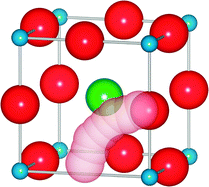Oxide-ion and proton conducting electrolyte materials for clean energy applications: structural and mechanistic features
Abstract
This critical review presents an overview of the various classes of

* Corresponding authors
a
Department of Physical Chemistry, IENI-CNR and INSTM, University of Pavia, Viale Taramelli, 16, Pavia, Italy
E-mail:
lorenzo.malavasi@unipv.it
b
Nanostructures Research Laboratory, Japan Fine Ceramics Center, 2-4-1 Mutsuno, Atsuta-ku, Nagoya 456-8587, Japan
E-mail:
c_fisher@jfcc.or.jp
c
Department of Chemistry, University of Bath, Bath, UK
E-mail:
m.s.islam@bath.ac.uk
This critical review presents an overview of the various classes of

 Please wait while we load your content...
Something went wrong. Try again?
Please wait while we load your content...
Something went wrong. Try again?
L. Malavasi, C. A. J. Fisher and M. S. Islam, Chem. Soc. Rev., 2010, 39, 4370 DOI: 10.1039/B915141A
To request permission to reproduce material from this article, please go to the Copyright Clearance Center request page.
If you are an author contributing to an RSC publication, you do not need to request permission provided correct acknowledgement is given.
If you are the author of this article, you do not need to request permission to reproduce figures and diagrams provided correct acknowledgement is given. If you want to reproduce the whole article in a third-party publication (excluding your thesis/dissertation for which permission is not required) please go to the Copyright Clearance Center request page.
Read more about how to correctly acknowledge RSC content.
 Fetching data from CrossRef.
Fetching data from CrossRef.
This may take some time to load.
Loading related content
